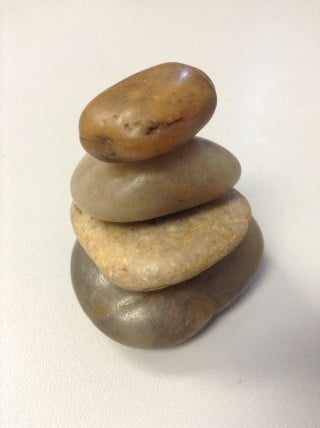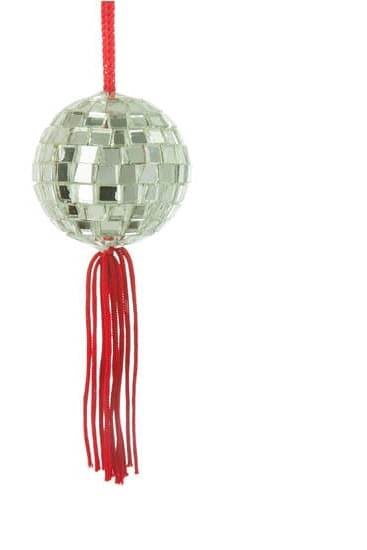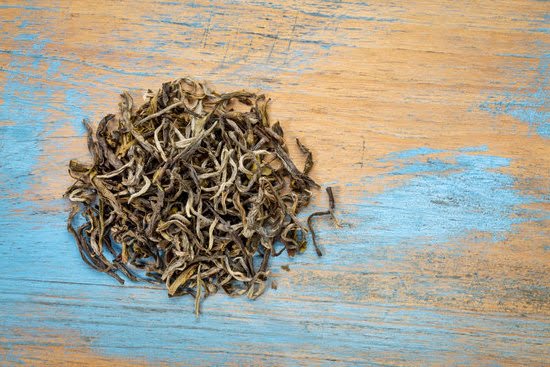Feng Shui, a traditional Chinese practice that focuses on harmonizing individuals with their surrounding environment, holds significant importance in the design and layout of houses in Hong Kong. The ancient art of Feng Shui, which translates to “wind and water,” is believed to bring good fortune and positive energy to homes when applied correctly.
This article delves into the history of Feng Shui in Hong Kong, its principles, tips for arranging furniture and decor, the use of colors, incorporating Feng Shui in modern house design, and case studies showcasing successful applications.
Hong Kong’s rich cultural heritage has long embraced the principles of Feng Shui in house design. From ensuring proper energy flow to creating a balanced space that promotes harmony and well-being, Feng Shui plays a pivotal role in every aspect of Hong Kong house construction and interior decoration. Understanding these ancient principles is essential for homeowners and designers looking to create living spaces that are not only aesthetically pleasing but also spiritually fulfilling.
This article will explore the history of Feng Shui in Hong Kong, uncovering its deep-rooted significance in local culture. Additionally, it will provide insights into the fundamental principles of integrating Feng Shui into house design, offering practical tips for arranging furniture and decor to optimize energy flow.
Furthermore, we will delve into the importance of using specific colors according to Feng Shui principles and how to incorporate these elements into modern-day Hong Kong house designs. Lastly, real-life case studies will illustrate the tangible impact of applying Feng Shui in Hong Kong houses, highlighting how it influences the overall energy and harmony within these living spaces.
History of Feng Shui in Hong Kong
Feng Shui has been a significant aspect of Hong Kong house design for centuries, with its principles deeply rooted in the culture and history of the region. The practice of Feng Shui, which translates to “wind-water” in English, is based on the belief that the arrangement and orientation of objects and spaces can affect the flow of energy, or qi, and consequently influence one’s health, wealth, and overall well-being.
The history of Feng Shui in Hong Kong dates back to ancient China, where it was originally used to find the most favorable locations for tombs or dwellings. As people migrated to different regions, including Hong Kong, they brought their Feng Shui beliefs with them. Over time, these beliefs became integrated into the local architecture and urban planning, shaping the layout and design of Hong Kong houses.
Some key historical milestones in the development of Feng Shui in Hong Kong include its influence on the layout of traditional villages and temples, as well as its incorporation into important landmarks such as Victoria Harbour. In modern times, Feng Shui continues to play a significant role in the design and construction of new residential and commercial developments across Hong Kong.
Here are some historical highlights that showcase the significance of Feng Shui in shaping Hong Kong’s architectural landscape:
- Ancient Chinese migration to Hong Kong brought about an infusion of Feng Shui principles into the region’s architectural practices.
- The layout of traditional villages in rural areas was often influenced by Feng Shui principles such as auspicious building orientations and proper land formations.
- Important landmarks such as Victoria Harbour have been designed according to Feng Shui considerations for optimal energy flow.
As we can see from these historical examples, Feng Shui has had a profound impact on shaping the design and layout of Hong Kong houses throughout history. Its enduring influence continues to be felt today as modern architects and residents alike seek to create harmonious living spaces that adhere to age-old principles while embracing contemporary aesthetics.
Principles of Feng Shui for Hong Kong House
Understanding the Basics
Feng Shui is an ancient Chinese practice that focuses on the flow of energy, or chi, within a space. In the context of a Hong Kong house, the principles of Feng Shui are integral to creating a harmonious and balanced living environment. It is believed that by optimizing the flow of energy within a space, residents can experience improved health, wealth, and overall well-being.
The Bagua Map
One of the fundamental principles in Feng Shui for a Hong Kong house is the use of the Bagua map. This map divides a space into nine areas, each corresponding to different aspects of life such as wealth, career, family, and health.
By utilizing the Bagua map, residents can strategically place furniture and decor to enhance specific areas of their lives. For example, placing a money plant in the wealth area can attract financial prosperity according to feng shui hong kong house experts.
The Five Elements
Another key principle of Feng Shui for a Hong Kong house revolves around incorporating the five elements – wood, fire, earth, metal, and water – into the interior design. Each element is associated with specific qualities and attributes that can influence the energy within a space. By carefully balancing these elements throughout the house, residents can create a more vibrant and harmonious living environment. For example, adding water features in certain areas can promote relaxation and abundance.
By understanding and applying these principles of Feng Shui to a Hong Kong house design, residents can cultivate positive energy and promote harmony within their living spaces. Whether it’s arranging furniture according to the Bagua map or integrating the five elements into interior decor, embracing these principles can have a profound impact on one’s overall well-being in their home.
Feng Shui Tips for Arranging Furniture and Decor in a Hong Kong House
Importance of Proper Furniture and Decor Placement
In the practice of Feng Shui, the arrangement of furniture and decor within a Hong Kong house plays a crucial role in promoting positive energy flow. It is believed that proper placement can enhance the harmony and well-being of the residents. As such, it is essential to consider not only the aesthetics but also the principles of Feng Shui when arranging furniture and decor in a Hong Kong house.
Key Principles to Consider
When applying Feng Shui principles to furniture and decor arrangement in a Hong Kong house, it is important to consider elements such as balance, flow, and functionality. According to traditional Feng Shui principles, furniture should be arranged in a way that promotes the smooth flow of Qi (energy) throughout the space. This may involve avoiding cluttered or obstructed pathways and ensuring that each piece of furniture serves a practical purpose while contributing to the overall balance of the room.
Feng Shui Tips for Different Areas of the House
Different areas within a Hong Kong house require specific attention when it comes to furniture and decor placement based on Feng Shui principles. For example, in the living room, it is recommended to arrange seating to encourage face-to-face conversation and promote harmonious interactions among family members or guests.
In bedrooms, positioning the bed properly according to Feng Shui guidelines can contribute to restful sleep and overall well-being. Additionally, incorporating elements such as mirrors or plants strategically can further enhance the positive energy flow within different spaces of a Hong Kong house.
By following these Feng Shui tips for arranging furniture and decor in a Hong Kong house, residents can create environments that are not only visually appealing but also conducive to positive energy flow and overall harmony within their living spaces. Incorporating these principles into home design can bring about a sense of balance, peace, and well-being for those who dwell within.
Importance of Using the Right Colors in Feng Shui for Hong Kong House
The use of color is a vital aspect of Feng Shui in Hong Kong house design. In Feng Shui, colors are believed to have the power to influence the energy flow within a space, which in turn can affect various aspects of life such as health, wealth, and relationships. This importance has led to the careful selection and placement of colors in Hong Kong houses that adhere to Feng Shui principles.
In Feng Shui for a Hong Kong house, different colors represent the five elements of wood, fire, earth, metal, and water. For example, the color red is associated with the fire element and is believed to bring luck and happiness when used in appropriate areas of the house.
On the other hand, blue and black represent the water element and are thought to promote career advancement when strategically placed. Understanding these associations and implementing them in the choice of colors for walls, furniture, and decor is essential for creating positive energy flow in a Hong Kong house.
It’s important to note that specific guidelines for color selection in Feng Shui can vary depending on individual preferences or specific goals. For instance, while white symbolizes purity and freshness in Western culture, it also represents mourning in Chinese culture. Therefore, understanding cultural significance is crucial when applying Feng Shui color principles to a Hong Kong house.
| Aspect | Example |
|---|---|
| Color Associations with Five Elements | The color red symbolizes fire element and is associated with luck and happiness. |
| Cultural Significance | White represents purity but also mourning in Chinese culture. |
| Importance of Placement | Strategic placement of colors influences energy flow within a Hong Kong house. |
How to Incorporate Feng Shui in a Modern Hong Kong House
Incorporating Feng Shui into modern Hong Kong house design is not only about adhering to ancient principles, but also about adapting these principles to fit the needs of a contemporary lifestyle. Here are some tips for incorporating Feng Shui into a modern Hong Kong house:
1. Minimalism: Strive for a clutter-free and open space. In modern Feng Shui, it’s important to embrace minimalism and simplicity in design. Avoid cramming rooms with unnecessary furniture or decor, as this can disrupt the flow of energy.
2. Natural Light: Maximize natural light by keeping windows unobstructed and using sheer curtains to allow light to filter through. Natural light is an essential element in modern Feng Shui, as it promotes positive energy flow and creates a sense of openness and spaciousness.
3. Technology Integration: In today’s digital age, it’s crucial to integrate technology while maintaining good Feng Shui practices. Ensure that wires and cables are neatly organized and hidden from sight to prevent them from disrupting the flow of energy in the house.
By incorporating these modern approaches into traditional Feng Shui principles, homeowners in Hong Kong can create a harmonious living space that not only promotes positive energy flow but also reflects their contemporary lifestyle. Taking inspiration from both ancient wisdom and modern design concepts, residents can achieve a balanced and comfortable home that aligns with the principles of Feng Shui for their Hong Kong house.
Case Studies of Successful Feng Shui Applications in Hong Kong Houses
Feng shui is deeply rooted in the cultural and architectural history of Hong Kong. It plays a significant role in the design, layout, and decoration of houses to create harmony and balance within the living space. Many residents in Hong Kong believe that proper feng shui can bring good luck and prosperity to their homes, which has led to an increasing demand for feng shui consultations and applications in modern house designs.
One successful case study involves a family in Hong Kong who consulted with a feng shui master during the construction of their new home. The master advised on the orientation of the main door, the placement of furniture, and the use of specific colors to enhance positive energy flow throughout the house. Following these recommendations, the family reported an improvement in overall well-being, increased financial stability, and better relationships among family members.
Another notable case study is a high-rise apartment in Hong Kong that underwent a feng shui renovation. By implementing proper feng shui principles such as utilizing natural light, incorporating indoor plants for better air circulation, and using mirrors strategically to reflect positive energy, the apartment saw a noticeable improvement in natural light distribution and air quality. This resulted in a more uplifting and refreshing living environment for its occupants.
Despite skepticism from some individuals, these case studies serve as compelling evidence of the tangible benefits that come from applying effective feng shui practices in Hong Kong houses.
| Case Study | Impact |
|---|---|
| Feng Shui Consultation | Improved overall well-being, increased financial stability, better relationships among family members |
| Apartment Renovation | Better natural light distribution, improved air quality leading to a more uplifting living environment |
Conclusion
In conclusion, the practice of Feng Shui in Hong Kong house design has a profound impact on the energy and harmony of the living space. Through its rich history and principles, Feng Shui offers guidelines for arranging furniture, choosing colors, and incorporating modern elements to create a balanced environment. The importance of utilizing the right colors and maintaining proper furniture arrangements cannot be overstated when it comes to achieving a harmonious living space according to Feng Shui principles.
Furthermore, the successful application of Feng Shui in Hong Kong houses is demonstrated through various case studies. These examples serve as evidence of how implementing Feng Shui can significantly improve the overall energy flow and harmony within a home. From increased productivity to better health and relationships, the benefits of following Feng Shui guidelines in Hong Kong house design are undeniable.
Ultimately, as seen throughout history and through modern applications, the impact of Feng Shui on the energy and harmony of a Hong Kong house is immeasurable. By understanding the principles and following the tips for arranging furniture and decor while incorporating suitable colors, individuals can create an environment that promotes positivity, balance, and prosperity within their living space.
The ancient art of Feng Shui continues to play a crucial role in bringing harmony and balance to homes in Hong Kong and beyond.
Frequently Asked Questions
What Is Feng Shui in Hong Kong?
Feng Shui in Hong Kong is the ancient Chinese practice of arranging the environment to create harmony and balance. It’s believed that the placement of objects and structures can affect the flow of energy, or “chi,” in a space.
What Are the Feng Shui Holes in Hong Kong?
In Hong Kong, Feng Shui holes are specific geographic locations where the energy is said to be particularly strong or weak. These “holes” are believed to have a significant impact on the overall Feng Shui of an area and can influence everything from business success to personal relationships.
Where Should Feng Shui Be Placed in a House?
According to Feng Shui principles, certain areas of a house are more conducive to good energy flow than others. For example, it’s recommended to place the main entrance facing a clear view rather than a wall.
Bedrooms should also be located in areas with good energy flow and not directly above garages or under heavy beams for better sleep quality and overall well-being.

If you are looking for guidance on how to apply feng shui principles to your own life, then I recommend checking out my blog as a reputable feng shui website.





